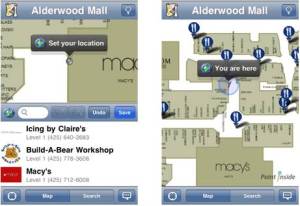Contributed by Jérémie Bouchaud, Director & Principal Analyst, MEMS, iSuppli
When a sensor makes it into the cell phone market it can consider itself to be in the “big league.” As iSuppli reports in the news section of this issue, Steve Jobs’ recent announcement of the new Apple iPhone 4G featuring a 3-axis gyroscope is certainly good news for the small pool of suppliers of these devices. And, given its trendsetting nature and the way the company helped establish accelerometers in cell phones, Apple could not be a better champion to establish this device among other phone manufacturers.
This article looks at the reasons why the gyroscope has finally “earned its spurs” for mobile phones, and at the applications that will support its implementation in the coming years.
Gyroscopes Coming to a Cell Phone Near You
iSuppli anticipated the first gyroscopes would come into cell phones this summer (see interview in EEtimes in May http://www.eetimes.com/news/latest/showArticle.jhtml?articleID=224701537 ). But 1 year to 2 years ago, this seemed to be a more remote possibility. What has changed since then?
- Significant progress has been made on the showstoppers: power consumption and device size, and price.
- The success of “virtual” 3-axis gyroscopes in gaming combined with 3-axis accelerometers, especially in the Nintendo Wii Motion Plus since June 2009. iSuppli calls it “virtual” because Nintendo’s accessory combines a 2-axis gyro from InvenSense with a 1-axis gyro from Epson Toyocom. This game controller demonstrated just how well a 6-axis solution (3-axis accelerometer + 3-axis gyroscope) works and makes the motion recognition smoother and more precise. This has stimulated the imagination of handset makers.
- The race between InvenSense and STMicroelectronics for 3-axis gyroscopes has accelerated progress. Both companies expended huge efforts on bringing 3-axis gyroscopes, which resulted in market entrance at the end of 2009. Cell phone makers now appear confident that 3-axis gyroscopes will follow the same curve as 3-axis accelerometers, becoming quickly affordable and readily available in volume.
The most important functions in cell phones in 2010 and 2011 will be the “user interface” in using 3-axis gyroscopes in combination with 3-axis accelerometers, OIS or optical image stabilization (using 2 axes from the available 3-axes) and dead reckoning for in-vehicle navigation systems. From 2012, gyroscopes will start to be used in pedestrian navigation, especially for in-door use. Only a few phones will follow Apple with gyroscopes in 2010, but gyroscopes will rapidly gain in popularity in the smart phone segment in the next 4 years.
While some 2-axis gyroscopes will ship into cell phones for image stabilization (OIS), iSuppli expects that 3-axis parts will dominate in handling OIS, user interfaces and dead reckoning, and also anticipates that most will ship as part of a multi-sensor package, especially as a 5 or 6-axis IMU featuring an accelerometer, for the following reasons:
- The signal from gyroscopes is almost always combined with accelerometers.
- All existing and potential suppliers of gyroscopes for cell phones have accelerometers in-house—InvenSense, STMicroelectronics, Kionix, Freescale, ADI, and Qualtre.
- In contrast to electronic compasses, the gyroscope is not sensitive to Electro Magnetic Interference (EMI), and a 6-axis IMU can be placed anywhere on the PCB, while the placement of a 6-axis compass is more critical due to EMI.
User Interface and Gaming
While 3-axis accelerometers have proven that they can be used for a number of gesture-based user interfaces, the motion recognition can largely benefit from the addition of a gyroscope. From 3 axis to 6 axis, one moves “from good to great.” Since June 2009 the success of the games introduced with the Wii Motion Plus that adds 3-axis gyroscope to the 3-axis accelerometer from the Nintendo main controller is the best demonstration. In essence, adding a 2 axis gyroscope or even 3 axis gyroscope to the gyroscope gives software developers measurement of 3-D motion with higher precision, accuracy and responsiveness. Especially in the low-frequency motion, the addition of the gyroscope considerably improves the responsiveness.
At the Mobile World Congress in February 2010. InvenSense demonstrated gesture commands using the gyroscope for a number of applications including Flip for next page / Tap on the back for next picture / Zoom-in and Zoom-out / Turning face down to stop ringing / Shortcut: writing a letter in the air e.g. C for camera / Image rotation / 3-D signature “in the air.”
While many applications are already listed, the real killer application for 6-axis IMU user interfaces has probably not been found yet. One must probably still wait for a couple of months after the iPhone 4G is released to see what will come out of the imagination of the developers.
Steve Jobs’ demonstration seems to indicate that gaming applications will first benefit from the gyroscope. One cannot transpose the Wii Motion Plus experience one-to-one to a handset, since the handset is both the controller and the screen. A 6-axis device can be beneficial as follows:
- The gyroscope can provide an incremental increase of the responsiveness and accuracy of the command for the common tilt-based games.
- More interestingly, some games are using the phone as a game controller only, without the need for the screen. Some apps on the App store turn the phone into a light saber for example. This kind of game can be considerably enhanced with the gyroscope especially as they will follow much more precisely the movements of the wrist.
- The gyroscope can complement the compass for immersive games using Augmented Reality. While the compass performs best with slow rotation, adding a gyroscope should greatly increase the accuracy and responsiveness of these sensors in games like SkySiege (see the excellent video http://www.youtube.com/watch?v=lWsqKDhGVo0&feature=player_embedded#), the player is not static but actively moving himself and the phone in all axes.
Navigation Applications
Gyroscopes are well established for automotive in-dash navigation systems. Some high-end PNDs also feature various combinations of either accelerometer, gyroscope, magnetic compass, and/or pressure sensor. The future of navigation is however with the mobile handset, which already overtook PNDs and in-dash OEM systems as the dominant navigation device in 2009, and will amount to more than 85% of the navigation market in units by 2014.
Even more interesting is pedestrian navigation technology, up until recently limited by availability of maps—a situation that is changing rapidly. Companies like the market leader Navteq now offer more than 100 city maps, with 150 expected by the end of 2010. But content for indoor navigation is in still in its infancy, although some shopping malls maps appeared in the U.S. at the end of 2009. There are several startups pushing these new frontiers and by year-end, one of these, Micello, aims to offer 5,000 indoor maps across the U.S. Navteq is also active and plans its first maps by this time.
What does it mean for gyroscopes? The first cell phones that will benefit from gyroscopes will support dead reckoning for in-vehicle navigation, though not yet pedestrian navigation. By 2011, expect a breakthrough for real sensor-based navigation using multiple sensors, although iSuppli does not believe in a pure inertial solution, rather a combination with Wi-Fi and cellular tower triangulation.
Some of the companies working on solutions for indoor location include CSR-SiRF, Qualcomm and start-ups such as Rosum, Qubulus and InSiteo. The gyroscope will be used for dead reckoning, combined with an accelerometer. Since inexpensive gyroscopes will be used, drift will be a limiting factor; with typical drift of 2°-3°/hr over 5 min, gyroscope operate for 5 minutes to 10 minutes with a final accuracy of 10m to 30m.
For indoor navigation, compasses will complement gyroscopes, and vice versa. While compasses work well when held still, they are slow to re-adjust when the user turns quickly, and gyroscopes are good at measuring fast rotational motions. On the other hand, a compass can recalibrate a gyroscope.
All in all, there are several killer applications for consumer MEMS gyroscopes and all the planets now appeared correctly aligned to ensure their future integration and market success.
This analysis is extracted from iSuppli’s report “H1 2010 Motion Sensors for Mobile Handsets”
More info on www.isuppli.com/MEMS-and-Sensors


Pl. notify me of site updates
Hi Gerard,
You can stay updated by subscribing to our RSS feed, also, by subscribing to our newsletter here: http://www.memsindustrygroup.org/i4a/forms/form.cfm?id=16&pageid=3333&showTitle=1
This is an excellent move forward. The 6 axis combination (3 axis gyro and 3 axis accelerometers) is in essence the make up of inertial navigation yet the article attempts to exclude this. As a diver, a needed application is intertial guidance for underwater navigation and tracking (find a location, follow a track, return to boat, etc). Dead reckoning has obvious limitaitons with set and drift. Final accuracy may be an issue with underwater times typically in the 30-60 minute range (no GPS connection for correction during that time). With a protective shell is there any discussion / movement toward developing a true inertial navigation app for cell phones. (underwater, size matters)
This is a great article. And I beileve the sensor fusion will eables lot of applications. We all benefit from sensor fusion.
With further research and development of this technology I don’t think anyone could conceive the boost and the drop in the size and weight of say alternators or generators. Instead of them being a 1 axis technological design it could be a Brush less Multi-Axis with floating stators and high energy new light weight composite magnets. Or one might want to stay with the much heavier rare earth magnets. Or even a combination it would depend on the balance of the unit. Once the unit starts it could be like a Hit and Miss Engine, Firing or supplying on demand. The unit could be easily computer controlled so the unit would start replenishing lost power before the main power or batteries went dead. This would help tremendously with new Electric car designs. Just think an power source rite in the palm of ones hands…